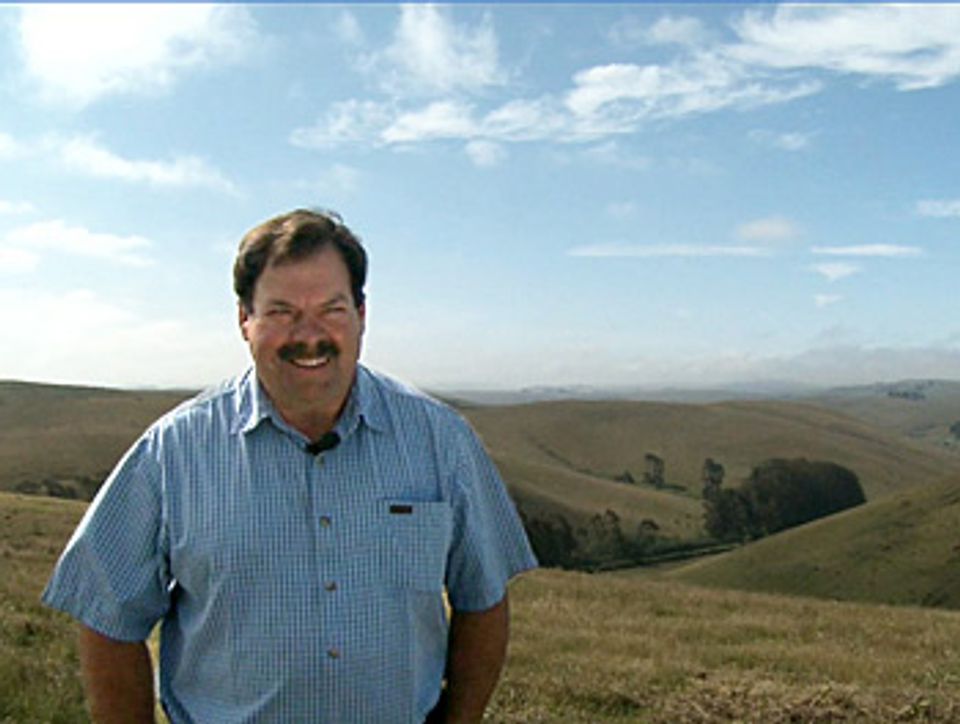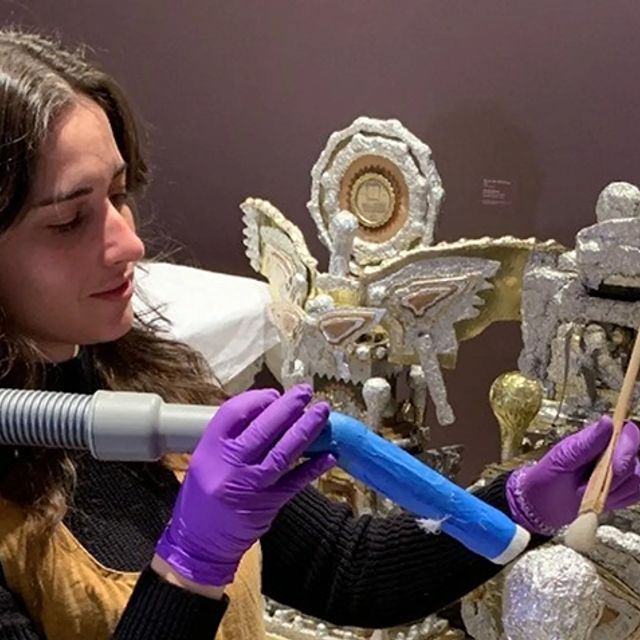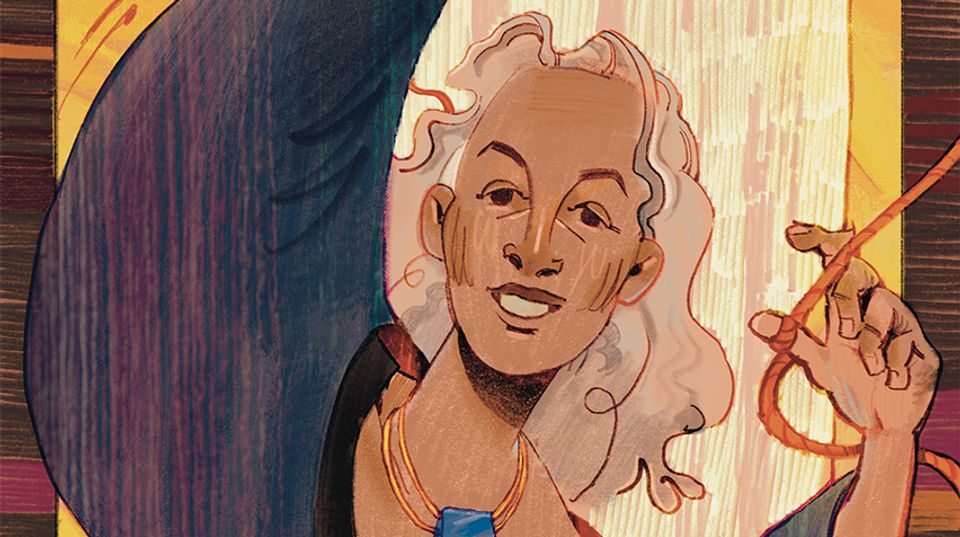
Joe Pozzi today. Still from the film The Running Fence Revisited, by the Smithsonian American Art Museum and estWest, SARL, Wolfram Hissen, Producer.v

Joe Pozzi was only a boy when Christo and Jeanne-Claude approached his father for permission to erect The Running Fence on land that ran through their Sonoma County, California, property. We asked Joe if he would kindly share some of his memories of Christo and Jeanne-Claude and the Running Fence with us. The exhibition Christo and Jeanne-Claude: Remembering the Running Fence closes on September 26.
Eye Level: How old were you when Christo and Jeanne-Claude first approached your father to have the Running Fence go through his property?
Joe Pozzi: I must have been twelve years old or so.
EL: In the video, Revisiting the Running Fence from 2009 that is shown in the exhibition at American Art, Christo calls your father, Ed Pozzi, "one of our best supporters." How did he offer his help?
JP: We were very isolated on our family farm, and very rarely saw other people. When Christo came to our door it was "off the chart" with someone wanting to do something on our property. I think my father said something about "some hippie wants to build a fence on my property. I told him we build our own fences here." On the first visit, Christo came in the morning and we were milking cows. After that Christo came back in the afternoon and brought Jeanne-Claude with him and there was more time to visit, once we had finished the morning milking. We were always very open to new people. When we got our first impression of Christo it just stuck. Chisto kept coming back. And while he was talking about the Running Fence, he brought the book about his previous work in Colorado, Valley Curtain. It showed he was serious. And then it started. The relationship between Christo and my dad just started to build.
EL: Did they stay friends?
JP: Not exactly. Whenever there was a chance to see each other they would. We'd read about Christo and Jeanne-Claude in the paper but in the farm or ranch out here you stick close to home with your businesses. The central spot for keeping up with Christo and Jeanne-Claude was through the local post office. Any time there was a new event, say The Umbrellas (1984-1991), we'd have updates from the post office. A new article would be hung up. It was always good memories with Christo. This provided the 15 minutes of fame for [our town of] Valley Ford.
EL: How did you interact with Christo and the Running Fence?
JP: I always said that I was the youngest worker for the fence. In 1974 Christo was laying out the design of where he wanted the fence to go. While he was out near the ocean I was kind of a runner for him, putting the stakes in the ground, things like that. I'd spend about eight or nine hours a day with him for two or three weeks. There weren't any video games back then. It was always exciting to go and take a look.
EL: Did you go to any of the hearings for permits, which looked a little harrowing from the films?
JP: I did go and it was interesting. I went to the local meetings. My dad spoke up. My dad loved history of the area and of the people but sometimes he'd have four or five stories going on at once. He'd end up talking about the potatoes fields in the 1860s. He always got pretty animated. Like all of the ranchers, he didn't want anyone to tell him what he could or could not do on his property.
EL: When the Running Fence came down, what happened to the fabric and poles your father was given that were on his property?
JP: Once the project was over Christo and Jeanne-Claude didn't have any use for it. They rolled it all up. The fabric was big, say 18 feet high by 60 feet long and every foot or so was marked by a clip. Every weekend for months on end we would unroll the fabric and take all the clips off these big pieces of fabric. Somebody would buy a piece for a wind shelter. People would have concerts and wanted a backdrop. Pretty soon people would ask for extra pieces. It just kind of disappeared over time.
EL: One rancher made a wedding dress from the material. (Let's hope they left out the poles). Did you go to that wedding by any chance?
JP: No I heard that story but I don't know if that happened.
EL: Did the experience change your father's view of art? Did it change yours?
JP: Christo was such a great champion of organizing people. A lot of the ranchers didn't know each other. If you were milking cows and somebody was raising chickens you didn't know each other. So all of a sudden we had a group of 40 or so ranchers allied to support Christo at the hearings. "This is our property. It's not going to harm anybody." That brought out the fight in everybody to support Christo. That part changed my dad as far as getting out and becoming more involved in the public process. We needed to unite sometimes and express our opinion to other people. That part changed people.
I still think about the magnitude of the project. It was such a big feat in my opinion. As a kid the memories of just walking up next to it and realize how big and majestic it was when you thought all the hills were good for were raising sheep and cattle. The more I think of it the more special I realize it was.
EL: Thank you, Joe Pozzi, for sharing your memories of Christo and Jeanne-Claude and the Running Fence.
To find out more about the ranchers and families who made the Running Fence possible take a look at our interactive.
















